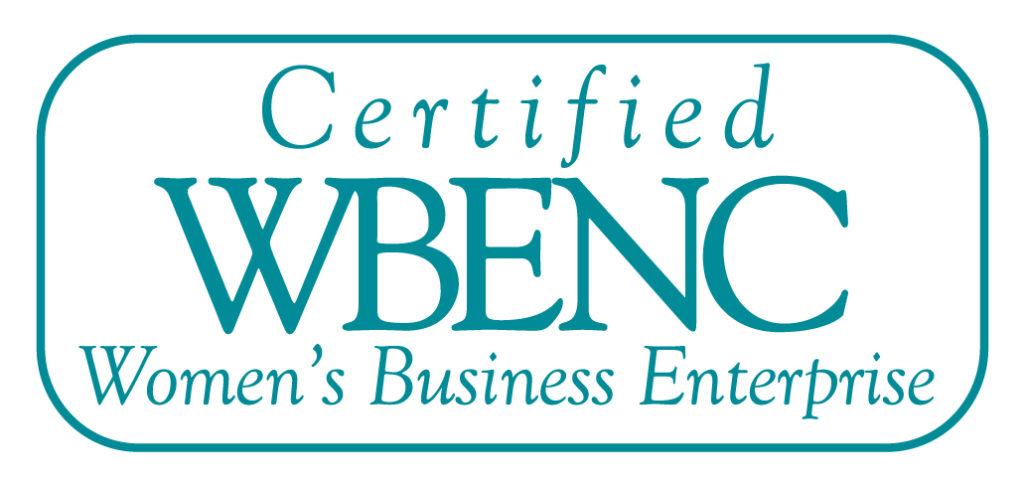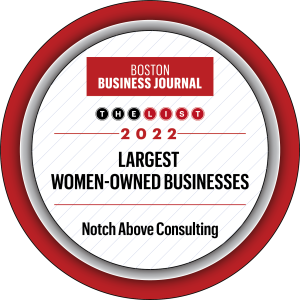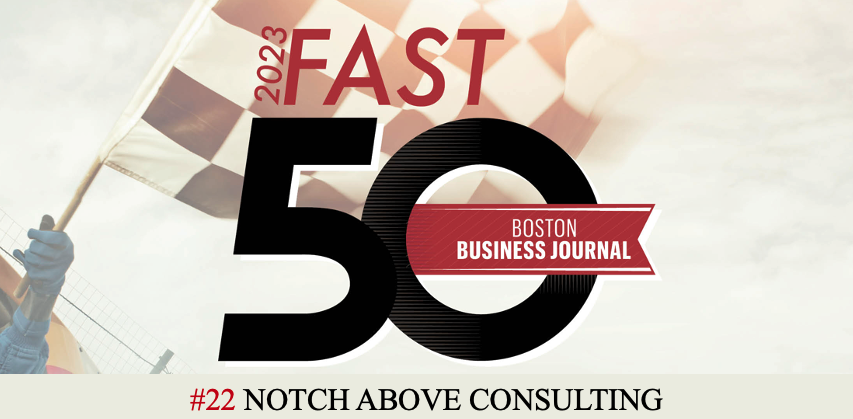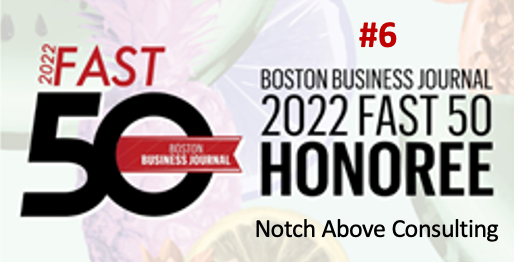These days, organizations want the ability to respond rapidly to an ever-changing business environment. Most organizations are aware that adopting Agile methods can help create an environment that supports innovation, increases time to market, empowers employees, and reduces unnecessary layers of the management hierarchy. Results of adopting Agile include improved collaboration, customer satisfaction, capacity predictability, and happy employees. With all this positive news and results, many CEOs and CTOs are asking themselves, “Is Agile right for our organization?”
Notch Above Consulting is asked this question all the time and the answer is not as simple as you may think. Agile is a journey, a journey that requires change. All aspects of adopting change need to be thought through and considered for your Agile journey to be successful. The company’s leadership team needs to be on the same page and needs to help create their desired corporate culture to reap the benefits of Agile. Whether you are considering Agile, have begun to adopt Agile, or are far along in your Agile transformation, there are several key questions to ask yourself to help ensure that Agile will work for you and your organization.
Is Agile right for your organization?
Transitioning to Agile requires a companywide commitment. If you are thinking about moving to an Agile operating model, you may want to ask yourself the following questions:
- Do you feel as though your team is only addressing symptoms of a problem and never getting to the root cause?
- Do you find that urgency always seems to overrule innovation?
- Are your team members burnt out by the highs and the lows of job demands and consistently missing milestones?
- Is your technical debt consistently growing as you deal with new functionality competing with old architecture?
- Do you find it difficult to adjust to customers’ changing priorities?
- Are you craving quicker turnaround times and a faster pace?
If the answer is yes to any or all of the above questions, then an Agile operating model may benefit your organization.
Have you started Agile, but not seeing the benefits?
Many organizations have started to adopt some concepts of Agile but are not seeing the full benefit. Transformation requires tremendous cross-functional efforts and achieving the desired level of coordination takes time. Successfully completing an Agile transformation is easier said than done. It is a significant paradigm shift for those involved and may be upsetting for those more comfortable in a traditional project environment. Most companies move to an Agile approach gradually over several years. If you have started your Agile journey and are not seeing the benefits, it may be helpful to ask yourself the following questions.
Do your stakeholders feel left in the dark?
Stakeholders want to have access to the status of a project at any point in time, and not at a set cadence, like monthly update meetings. Agile allows stakeholders this capability. An Agile stakeholder is part of the journey and is able to work closely with the teams throughout the course of a project. As a result, the stakeholders have real-time information on how things are progressing, versus having to wait for updates to become available.
Are roles and responsibilities on your teams clear?
During an Agile transformation, companies will lift and shift people into new roles but that does not always equal success. The proper training and understanding of the Agile operating model are key to making these changes in roles successful. The Agile structure is designed to be more of a flat organization and less of an hierarchy. Time and again companies need guidance in defining these new roles.
Are you missing deadlines?
Despite being Agile, many organizations find that the assumptions made during planning do not match the output achieved in a designated sprint or release. There can be multiple factors causing this, but often it is the result of capacity being unknown at the time of planning. As a result, companies deliver way less than they thought they could and in a much later timeframe. To be more predictive in planning your outcomes and timing of delivery, organizations need to better understand available capacity, and also consider planning shorter, more flexible iterations.
Are your vendor contracts creating a roadblock?
Often an organization’s contracts with third party vendors are structured in a fixed manner both in time and project/product commitment. The vendor delivers what is outlined in the contract at a certain point in time. Unfortunately, projects often change and a fixed contract does not allow the flexibility to adjust to this change. If you have started Agile and are finding your vendors are limiting your transformation, it may be time to rethink how the contracts are structured. Contracts that are written in a manner using time and materials or capacity allows you the flexibility to adapt to necessary changes that may occur throughout the course of a project. There are better ways to ensure you are getting the value you are promised.
Have the product teams been structured or divided accordingly to allow for product ownership?
In order for Agile to be a success, it is extremely important for the product teams to be structured appropriately. The structure needs to be segmented in a way where they have end-to-end responsibility of a product, not just alignment to a single application, for example. In a non-Agile environment, teams are frequently set up where one team owns the front end of a product only and another owns the back-end features. In Agile, teams are cross-functional and they “own” a product from end to end, regardless of how many applications are included. This type of structure allows for transparency, and flexibility, and helps teams to innovate along the way as they encounter roadblocks or customer or stakeholder changes.
When implemented correctly, an Agile operating model will deliver tremendous value and benefit. In fact, a recent survey conducted across 2,100 large to mid-size companies found that 65% of organizations that had a successful Agile transformation reported a positive impact on their financial performance. An Agile operating model enables organizations to be more reactive, do more with less, and better serve the interests of their customers. To do it well, an Agile transformation requires significant support, resources, and time, not to mention the commitment to stick it out when things get bumpy.
In summary, you are not alone if you have considered any of the above questions. The good news is the results you want can be achieved. Perhaps it would benefit your organization to have an assessment done to highlight the areas needing refinement. Or you might need some coaching for team members or folks in certain roles, to maximize their contributions; or to optimize the way processes or ceremonies are working. It may be that you are just starting your Agile journey, and training and education would be the right place to start. Regardless of where you are in the process, Notch Above Consulting has experts who can help your organization accelerate its Agile journey.





